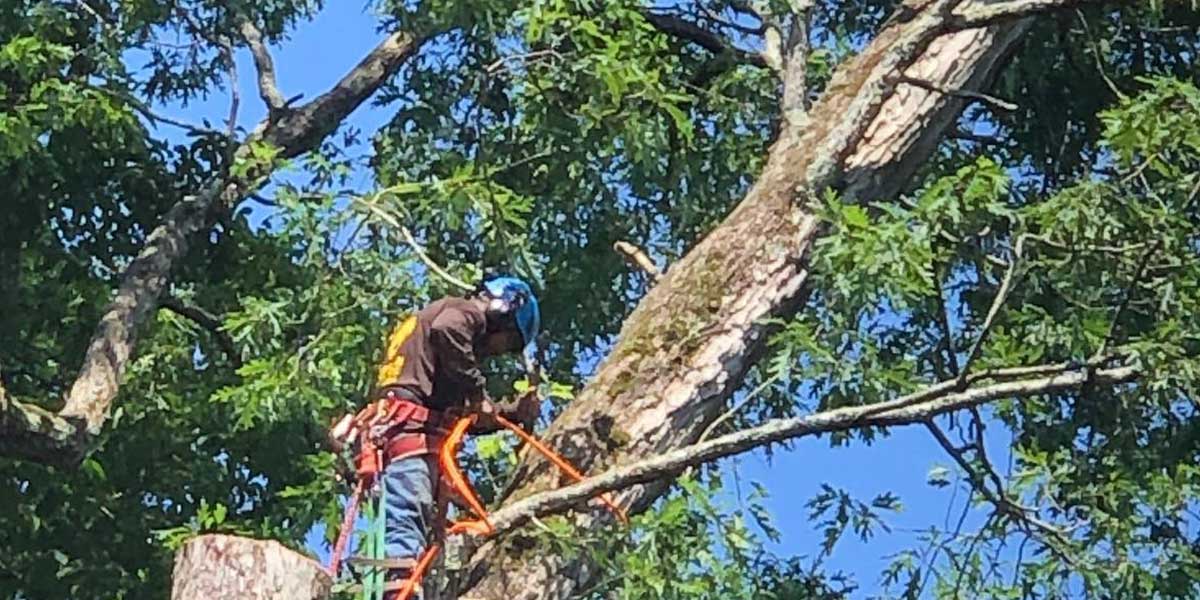Do you have a tree leaning after a storm and feel concerned about your safety? Contact Southern Tree Pros for reliable tree services in Vinings, GA. We help you understand what causes the tilt, the importance of addressing it, and our reliable and experience-proven approaches.
What Causes a Trunk To Lean?
Several factors cause a tree to lean. Root instability after prolonged soil erosion prevents the plant from maintaining its structural stability and strong winds can topple it in a storm.
The branches act like a sail rather than allowing the wind to pass through if the canopy becomes dense or top-heavy. Running into it with the trunk of a car or other impact damage can also cause the issue.
The Importance of Fixing a Tilting Tree
Why should property owners prioritize fixing or removing a leaning tree? Once the angle reaches 15 degrees, it poses a serious risk to surrounding structures.
Wind damage could cause it to fall on a home or drop a branch on a car or person. If you don’t address the issue with professional help, the insurance company will likely find you fully liable for any repairs or medical expenses.
How Experts Stabilize Your Tree
How do professionals address a tree leaning after a storm? Whether it’s approaching a dangerous angle or already uprooted, they’ll consider the following approaches.
Support Staking Reduces the Structural Risk
Professionals prefer this method because it can sometimes save an otherwise healthy tree even when it leans more than 15 degrees. The experts will gently push the tree upright without causing further damage.
The crew will install stakes around the base of the tree and use rope to secure the tree in place. They may also use methods to stabilize the roots. However, this technique doesn’t work for older plants or those with excessive damage.
Professionals Sometimes Reinforce the Roots
The experts can sometimes stabilize exposed roots and help them anchor the tree. They may use the following techniques to correct a tree leaning after a storm:
- Soil aeration: Dense soil can suffocate and restrict roots from absorbing water. Aeration can restore them and strengthen the tree’s overall health.
- Mulching: Adding a layer of mulch can reduce the erosion that destabilizes the underground network.
- Transplanting: Moving a younger tree to an area with more stable soil can help it live a long life.
- Fertilization: Hydrating and providing nutrients to the roots can strengthen them and stabilize the tree over time.
- Treating disease: Certain fungi and pests can damage the underground structure. Experts can sometimes nurse it back to health.
Pruning and Trimming Can Restore Balance
Consider pruning or trimming if the plant leans because it’s top-heavy. But keep in mind that attempting this service yourself could cause greater damage if you remove sections that weaken the structure, making it vulnerable to pests and diseases.
Removing the Tree Functions as a Last Resort
Professional arborists will remove the tree if they can’t produce the necessary results with other methods. If you are interested in planting a new species after removal, they can determine the best location and help you understand how to prevent the young tree from experiencing the same fate.
Schedule Reliable Tree Care Services Today
Contact Southern Tree Pros when you need help with a tree leaning after a storm. We’re the top-rated service in both results and customer satisfaction. Whether you need help understanding the work of an arborist or advice on which trees to plant, you’ll appreciate our experience and expertise.
Call (770) 841-1684 to book an appointment.


